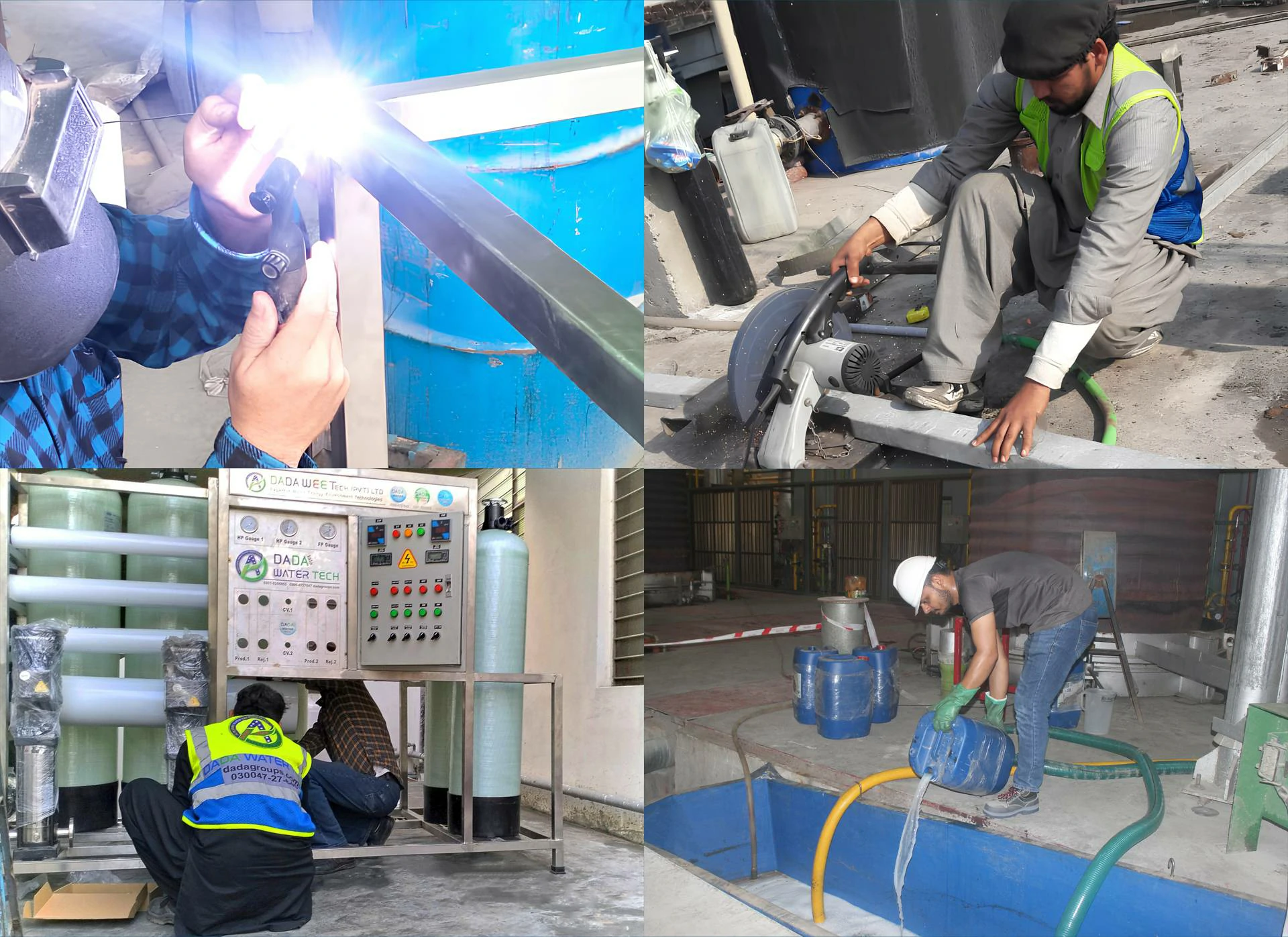Plant Fabrication Services
DADA Sustainable Services provides custom-tailored plant fabrication services designed to meet the unique industrial requirements of each client. By utilizing precision engineering and high-quality materials, DADA ensures that the fabricated plants are durable, efficient, and cost-effective. Our fabrication process adheres to stringent industry standards, guaranteeing optimal performance and longevity.
Key Features:
Precision engineering for superior quality
Durable materials that withstand operational demands
Alignment with industry standards for reliability
Plant Installation Services
DADA’s installation services ensure seamless integration of industrial systems from the initial site setup to final commissioning. With a strong focus on precision, safety, and cost-effective methods, we guarantee smooth operations. Our expert team ensures timely delivery and proper integration of systems, minimizing disruption.
Key Features:
Expert team with industry experience
Safe and efficient installation processes
Minimal operational disruption during setup
Plant Customization Services
DADA Sustainable Services offers flexible plant customization services tailored to meet specific operational needs. Our goal is to seamlessly integrate systems with existing infrastructure while maximizing efficiency. Whether adapting to space constraints or performance demands, DADA provides scalable solutions that align with your industrial processes.
Key Features:
Tailored solutions for unique operational requirements
Scalable options that grow with your business
Integration with existing systems for smooth operations
Overhauling and CiP (Clean-in-Place) Services
DADA Sustainable Services provides comprehensive overhauling services that involve thorough refurbishment and cleaning of critical plant components to restore peak efficiency. Our CiP services ensure the removal of fouling, scaling, and rust, enhancing the system’s performance while reducing downtime. This systematic approach increases the lifespan of your equipment and guarantees smooth operation.
Key Features:
Refurbishment services to restore equipment efficiency
Clean-in-Place techniques for hassle-free maintenance
Improved performance and reduced downtime
Training Manuals Services
DADA Sustainable Services provides comprehensive training manuals covering all operational and safety aspects of plant systems. These manuals serve as valuable resources for your team, offering detailed step-by-step instructions on maintenance, troubleshooting, and efficient operation. By equipping your staff with these resources, we empower them to manage systems effectively.
Key Features:
Detailed instructions for effective operation
Comprehensive safety guidelines
Valuable resource for training and reference
Plant Operation Services
DADA’s plant operation services focus on ensuring smooth, continuous, and efficient running of industrial plants. We provide expert supervision to oversee operational standards, enhance performance, and reduce downtime. Our operation services are designed to ensure compliance with safety and regulatory requirements while maximizing the operational efficiency of your systems.
Key Features:
Continuous supervision to enhance operational standards
Compliance with safety and regulatory requirements
Strategies for minimizing downtime and maximizing efficiency


